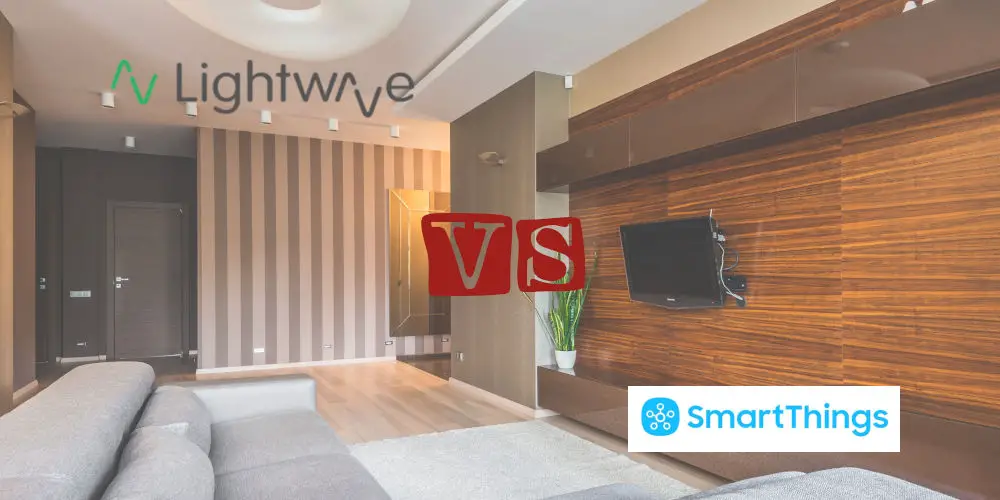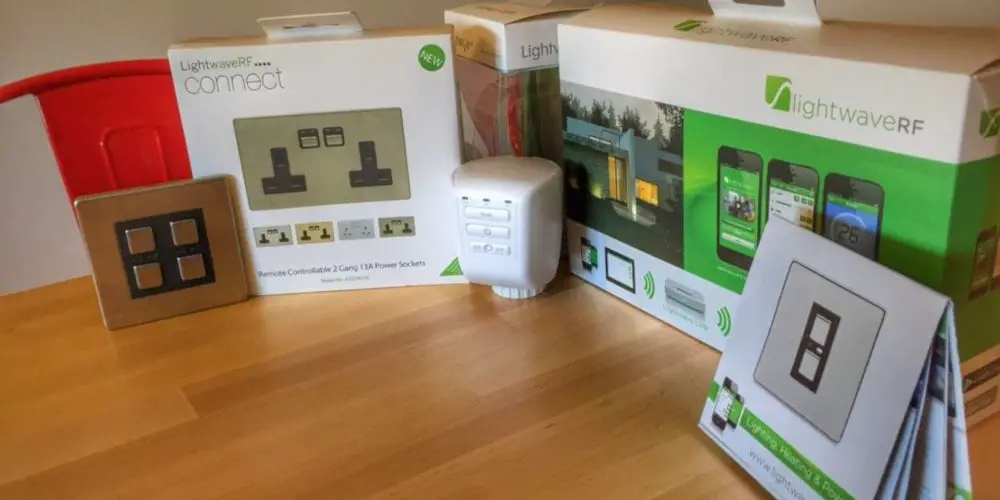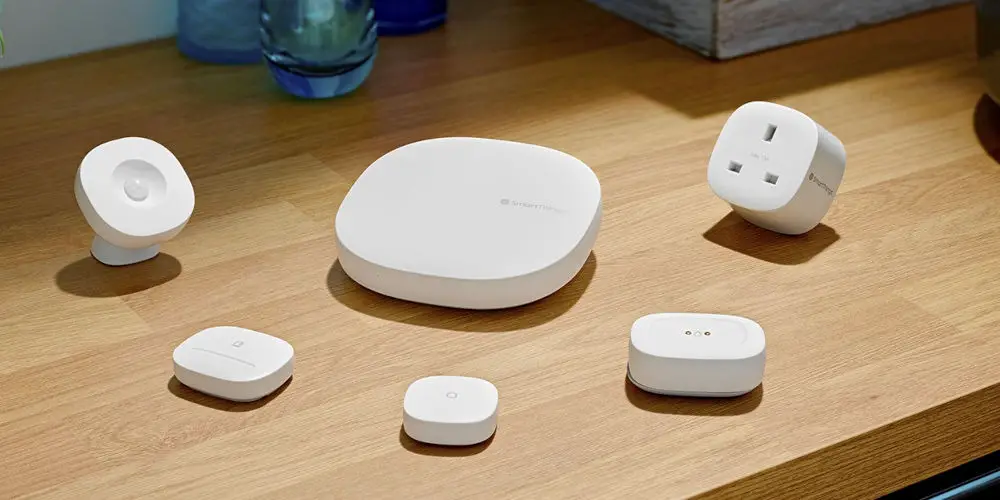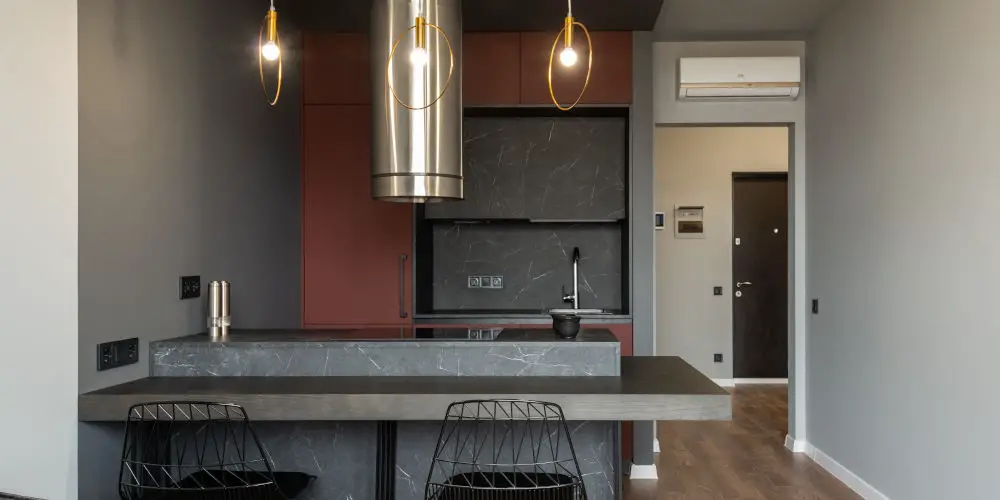Lightwave vs Samsung SmartThings home automation

Turning your home into a smart home is an exciting journey. However, with so many options available, selecting the ideal system can prove difficult. As two of the leading home automation systems, you might want to compare Lightwave vs Samsung SmartThings to find the clear winner.
Based in Birmingham, Lightwave is predominantly used in the UK. Whereas SmartThings was started in the USA and later acquired by Samsung. They have since rolled the technology into a wide range of its products that are available worldwide.
Each system achieves a similar result of allowing you control over important elements in your home but uses a unique method and protocol. Unlike comparisons of other smart home systems, choosing between Lightwave vs Samsung SmartThings is quite straightforward.
Lightwave

photo by Lightwave
History
Since forming JSJS Designs in 2008, John Sinclair and John Shermer have transitioned from building home automation solutions for the disabled to releasing products for the general consumer market.
Before becoming Lightwave, they teamed up with B&Q to release the HomeEasy range. They also partnered with Siemens on a system that would become the basis for the first generation of LightwaveRF products. They’ve since dropped the RF and are simply known as Lightwave.
How Lightwave works
Using wireless low powered radio frequencies, Lightwave allows control over a range of household devices with an affordable price tag. While the basic technology is widely available, Lightwave uses a unique control protocol.
At the centre of the system is a hub that connects to your Wi-Fi router. The hub sends commands to devices and allows control over them using remotes, a website and an app.
While more than sufficient for most applications, it does not have the advanced features of a mesh network technology such as Z-Wave. But more on that later.
However, Lightwave addressed this shortfall by adding 2-way communication in its second generation (read more: Lightwave gen 1 vs 2 comparison), which results in a stronger network and wider range within the home. With the 2nd generation, you’re no longer limited to a range of 15 metres.
You can use Alexa and Google Assistant to control your smart home system, giving you greater flexibility. Lightwave devices are also compatible with Apple HomeKit.
Is it DIY friendly?
If you’re good at DIY then there are virtually no installation costs and many products can be retrofitted. Unlike some home automation brands that require installation by an approved engineer, you should be up and running with Lightwave in a few hours.
The power sockets and lighting switches are easy to install and come in a range of cool finishes. Once installed, each device needs to be paired with the hub and the app. This is also really easy to do.
Current products
Offering a limited product range, Lightwave provides all of the essentials you need to start automating your home. You can power sockets (single and dual gang) and lighting switches (single, double, triple, quad) as well as a heating system (TRV valve controls, boiler switch, thermostat).
They also offer doorbells, several sensors, and relays. Using Lightwave devices you can easily control your lights, heating, power, blinds and more. Plus the Lightwave app is easy to use and allows control over your smart home system from anywhere with Wi-Fi.
Downsides
Highly affordable, Lightwave does have quite a few limitations. The first is the sockets are designed for the UK market and so aren’t available in other markets. They have released an EU style power socket, but are still behind other brands.
As devices can’t talk with each other, the hub has to tell each unit what to do, limiting the range to 15 metres indoors. Some of these issues are solved by the second generation products. However, the two generations aren’t fully compatible with each other.
You’re limited to a total of 100 devices in a single Lightwave system. Each device can be paired with only 6 controllers or sensors. The device limit comes down to a lack of controller memory rather than of Lightwave technology itself.
Samsung SmartThings

photo by Samsung
History
After experiencing extensive damage to his Colorado mountain home due to a power outage, co-founder Alex Hawkinson reasoned that it could have been avoided by using the right technology. As he couldn’t find a suitable solution, Hawkinson decided to solve his problem by starting SmartThings.
Just a few short years later and Samsung acquired the start-up for $200 million. Many considered this acquisition as Samsung first move into the Internet of Things (IoT) space and a small indication of the brand’s future direction.
Now known as Samsung SmartThings, the system provides customers with a fully integrated and automated home solution. Since the system is backed by Samsung, they have started to roll the SmartThings technology into various products.
How does Samsung SmartThings works?
At the heart of the Samsung SmartThings system is a hub, which connects to your Wi-Fi router, allowing you control from anywhere with an internet connection using the SmartThings app or website.
The hub sends and receives commands to devices and can be linked with up to 231 units. You can easily build a system that controls your lights, curtains, power, heating and TV.
What makes the system unique is Samsung now offers a range of products with the technology built-in, allowing for easy smart home integration. For example, you can buy a washing machine or robotic vacuum with the SmartThings technology already built-in.
But that’s not all. Another feature that makes the Samsung SmartThings system incredible powerful is that it also works with any Z-Wave or Zigbee device. So you’re able to use thousands of 3rd party products with the system.
If you want to be able to remotely control anything within your home, there will be at least one solution available.
Is it DIY friendly?
Samsung SmartThings is very DIY friendly and easy to install. It’s also highly affordable. The majority of devices are plug-in and play, allowing you to be set up and running in minutes.
Current product range
Easily automate your home by using a hub and a few plug-in-and-play power sockets. Once installed, it takes about a minute to pair devices with the hub.
Currently, Samsung doesn’t offer bulbs or light switches. That said, any Zigbee light bulbs and the Philips Hue range work seamlessly with the system.
Partnering with Honeywell and Natamo, SmartThings offers two heating control options depending on your budget and level of functions required.
An area where Samsung SmartThings excels is security. The product range includes several sensors that can detect motion, water and opening door/windows. There are also smart security cameras and a smart doorbell, which has a built-in camera and two-way audio.
Many Samsung products now include the SmartThings technology. For example, Any Samsung TV released since 2016, is likely to integrate into your SmartThings system or even act as the hub. No other smart home brand offers thing level of integration.
Following this success, Samsung has started to roll out products with SmartThings built-in including a Blu-ray player, soundbars, washing machine and robotic vacuum.
In terms of control, you can use either an app (both iOS and Android versions available) and a dedicated website. If you’re already using a Galaxy phone, then you can use Bixby to control your smart home with voice commands. You can also use the Samsung SmartWatch.
Are there any downsides?
As with other smart home systems that use Wi-Fi, some users have experienced drop-outs or poor signals. Often, this is due to the position of the hub or the wall thickness. However, you can boost the signal by adding a secondary hub.
Pairing devices can be tricky as not all products are found by the hub on the first try. Usually, this is a temporary problem that sorts itself out after a few attempts. If you fail to properly or fully remove a device’s pull tab, you can have issues pairing devices.
While they offer superb customer service, app updates can be quite buggy, leading many users to roll back to a previous edition until Samsung release fixes.
Unlike some home automation systems, which use aesthetically pleasing retrofittable devices, the Samsung SmartThings uses plug-in and play device that stick out. That said, these are easy to install and don’t require you to rewire anything.
Lightwave vs Samsung SmartThings
So that’s a brief overview of each of the home automation systems. But which is better? Let’s compare Lightwave vs Samsung SmartThings to see which is ideal for you.
Lightwave
Starting with Lightwave, we like how simple it is to use. There’s a range of starter kits available including one which uses a remote and plug-in power socket to enable basic control.
As a system, they have developed over the last few years with the introduction of the heating system and generation 2. The release of Gen 2 changes the game somewhat with two-way communication and a new hub that handles up to 200 devices and also integrates with devices using IFTTT (if this then that).
With all that said, it’s a closed system that’s still quite basic and only available in the UK. So if you’re looking for a simple and affordable way to automate the bulk of your home, then Lightwave is the system for you.
Samsung SmartThings
It’s easy to see the appeal of SmartThings. Firstly, the Samsung name holds much influence over home technology products with many of us having or using at least one of their products in our home.
While not as complex as Fibaro, SmartThings is easier to install and program as many devices are plug-in and play. Great if DIY isn’t your thing! That said, it does offer voice control using Samsung’s Bixby app as well as a dedicated app and online portal.
The real magic of SmartThings isn’t the product range. What makes SmartThings very interesting is that Samsung has started to roll out the technology across its product range, providing the consumer with an easier route to building a smart home.
Other big electronic brands may offer compatibility with Z-Wave, Google Home or Amazon’s Alexa but none offer products with their propriety home automation technology already built-in.

Choosing a winner: Lightwave vs Samsung SmartThings?
Choosing between Lightwave vs Samsung SmartThings is simple as SmartThings wins. The Samsung system is a fantastic alternative to Lightwave.
Lightwave provides a solid range of products that cover the essential tasks but is limited in range, function and control. Yes, IFTTT does work with Lightwave, offering a more sophisticated level of control but there is a steep learning curve.
SmartThings, on the other hand, offers a wider range of products including many Samsung electronic devices. Built using the Z-Wave and Zigbee protocols, you can integrate thousands of products with ease from various manufacturers.
Of course, SmartThings does have its limitations, but these are small in comparison to Lightwave. Invest in a Samsung SmartThings home automation system as you’ll reap the benefits for years to come.




